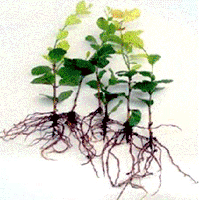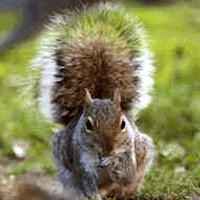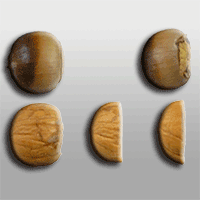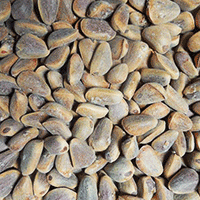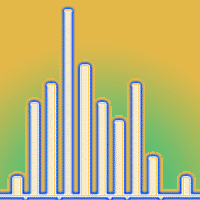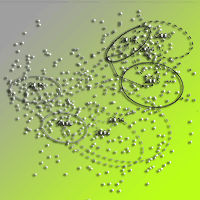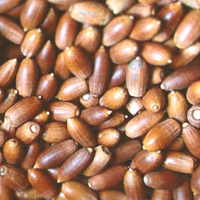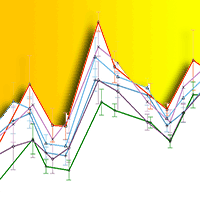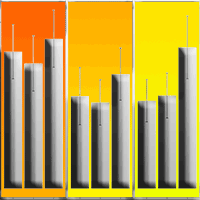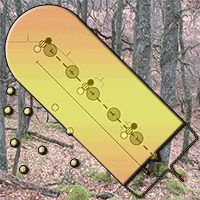
The impact of seed predation and browsing on natural sessile oak regeneration under different light conditions in an over-aged coppice stand
Jirí Kamler (1) , Lumír Dobrovolný (2), Jakub Drimaj (1), Jan Kadavý (3), Michal Kneifl (3), Zdenek Adamec (3), Robert Knott (2), Antonín Martiník (2), Radim Plhal (1), Jaroslav Zeman (1), Jan Hrbek (1)
iForest - Biogeosciences and Forestry, Volume 9, Issue 4, Pages 569-576 (2016)
doi: https://doi.org/10.3832/ifor1835-009
Published: Apr 04, 2016 - Copyright © 2016 SISEF
Research Articles
Collection/Special Issue: IUFRO division 8.02 - Mendel University Brno (Czech Republic) 2015
Coppice forests: past, present and future
Guest Editors: Tomas Vrska, Renzo Motta, Alex Mosseler
Abstract
Sessile oak (Quercus petraea (Matt.) Liebl.) is one of the most important commercial species cultivated at low altitudes in the Czech Republic, and over-aged coppices are a significant part of oak stands in the region. In order to secure a high-valuable timber production (e.g., through conversion of such stands into coppices-with-standards), knowledge of the potential and limits of generative regeneration is essential. This study was conducted in three oak-dominated over-aged coppice stands in different stages of conversion into coppices-with-standards and characterized by different basal area (BA, from 9.3 to 14.1 m2 ha-1) and relative diffuse radiation (ISF, from 12.1 to 35.5%). The study stands were compared with respect to seed predation following acorn fall and oak regeneration parameters. At the time of their fall the acorns represented a sought-after source of food for large mammals (particularly wild boar). At the end of acorn fall, 13-67% acorns were lost due to animal predation. A control evaluation conducted the following spring revealed a decrease of 92-97% in fallen acorns. Despite the major animal impact, a high reserve of acorns and saplings remained in the stands (4 600-29 000 acorns and 66 000-310 000 saplings per ha). With increasing light intensity the oak regeneration density decreased, while the height and age variability of oak regeneration increased. Although saplings were capable of surviving several years under unfavorable light conditions (even below 12% ISF), they require a minimum of 20% ISF (i.e., BA < 16 m2 ha-1) to achieve sustainable height increment. Based on our results, for conversion of such stands into coppices-with-standards we recommend a maximum of 200 reserved trees (BA = 16 m2 ha-1) to achieve successful height growth of the understorey.
Keywords
Over-aged Coppice, Quercus petraea, Natural Regeneration, Herbivore Impact, Acorn, Light Intensity, Wild Boar
Authors’ Info
Authors’ address
Jakub Drimaj
Radim Plhal
Jaroslav Zeman
Jan Hrbek
Department of Forest Protection and Wildlife Management, Faculty of Forestry and Wood Technology, Mendel University in Brno, Zemedelská 3, 613 00 Brno (Czech Republic)
Robert Knott
Antonín Martiník
Department of Silviculture, Faculty of Forestry and Wood Technology, Mendel University in Brno, Zemedelská 3, 613 00 Brno (Czech Republic)
Michal Kneifl
Zdenek Adamec
Department of Forest Management and Applied Geoinformatics, Faculty of Forestry and Wood Technology, Mendel University in Brno, Zemedelská 3, 613 00 Brno (Czech Republic)
Corresponding author
Paper Info
Citation
Kamler J, Dobrovolný L, Drimaj J, Kadavý J, Kneifl M, Adamec Z, Knott R, Martiník A, Plhal R, Zeman J, Hrbek J (2016). The impact of seed predation and browsing on natural sessile oak regeneration under different light conditions in an over-aged coppice stand. iForest 9: 569-576. - doi: 10.3832/ifor1835-009
Academic Editor
Tomas Vrska
Paper history
Received: Aug 31, 2015
Accepted: Feb 24, 2016
First online: Apr 04, 2016
Publication Date: Aug 09, 2016
Publication Time: 1.33 months
Copyright Information
© SISEF - The Italian Society of Silviculture and Forest Ecology 2016
Open Access
This article is distributed under the terms of the Creative Commons Attribution-Non Commercial 4.0 International (https://creativecommons.org/licenses/by-nc/4.0/), which permits unrestricted use, distribution, and reproduction in any medium, provided you give appropriate credit to the original author(s) and the source, provide a link to the Creative Commons license, and indicate if changes were made.
Web Metrics
Breakdown by View Type
Article Usage
Total Article Views: 53739
(from publication date up to now)
Breakdown by View Type
HTML Page Views: 44189
Abstract Page Views: 3997
PDF Downloads: 4045
Citation/Reference Downloads: 35
XML Downloads: 1473
Web Metrics
Days since publication: 3563
Overall contacts: 53739
Avg. contacts per week: 105.58
Citation Metrics
Article Citations
Article citations are based on data periodically collected from the Clarivate Web of Science web site
(last update: Mar 2025)
Total number of cites (since 2016): 24
Average cites per year: 2.40
Publication Metrics
by Dimensions ©
Articles citing this article
List of the papers citing this article based on CrossRef Cited-by.
References
Evaluating the impact of wild boar on oak regeneretion in Hungary. In: Proceedings of the “10th International Symposium on Wild Boar and other Suids”. Velenje (Slovenia) 1-5 Sep 2014. ERIC, Velenje, Slovenia, pp. 99.
Gscholar
Variation in ranging and activity behaviour of European wild boar (Sus scrofa) in Sweden. Wildlife Biology 9: 29-36.
Gscholar
Wild boar populations up, numbers of hunters down? A review of trends and implications for Europe. Pest management science 71: 492-500.
CrossRef | Gscholar
Spatiotemporal behavioural plasticity of wild boar (Sus scrofa) under contrasting conditions of human pressure: primeval forest and metropolitan area conditions of human pressure: primeval forest and metropolitan area. Journal of Mammalogy 91: 109-119.
CrossRef | Gscholar
Natural regeneration of the deciduous oak species Pedunculate Oak (Quercus robur L.) and Sessile Oak (Quercrus petraea Liebl.) - a literature review with focus on wood pasture. AFSV. Waldökologie-Online, Heft 5: 79-116.
Gscholar
Czech forest ecosystem classification. Journal of Forest Science 49: 74-82.
Gscholar

